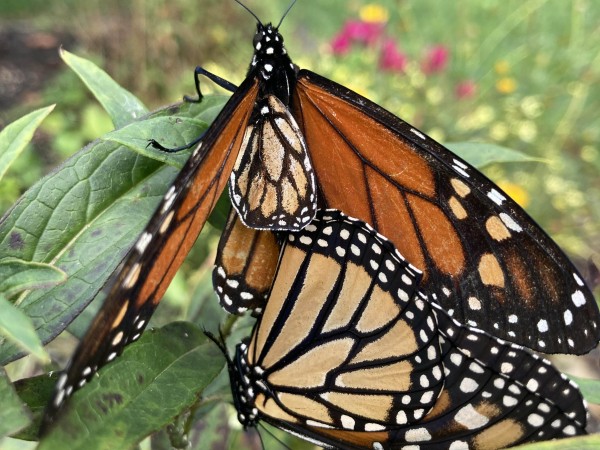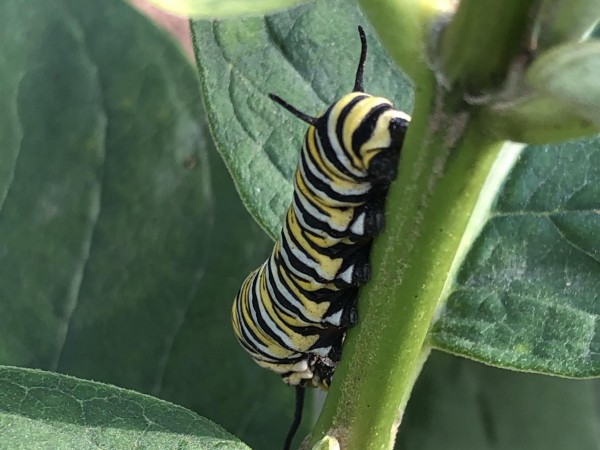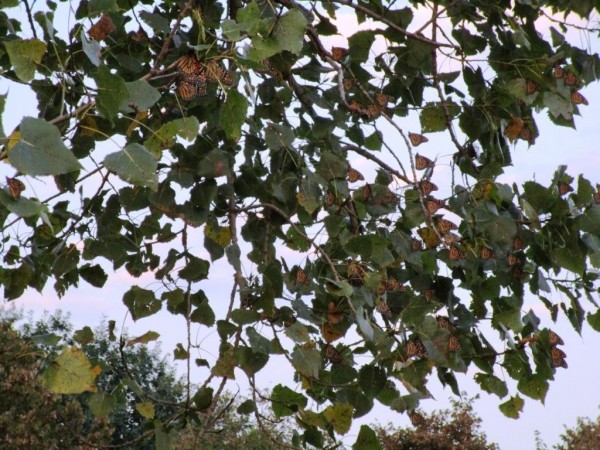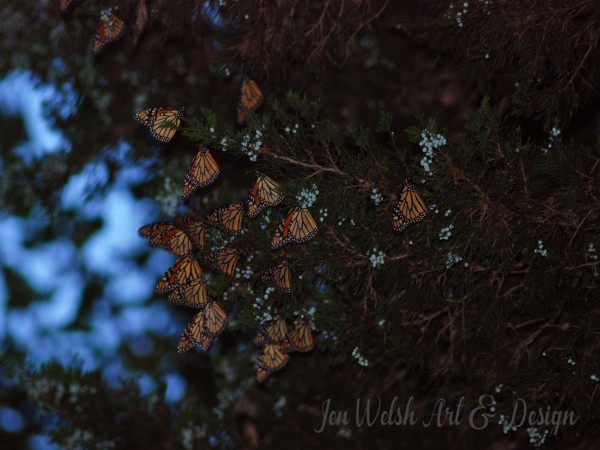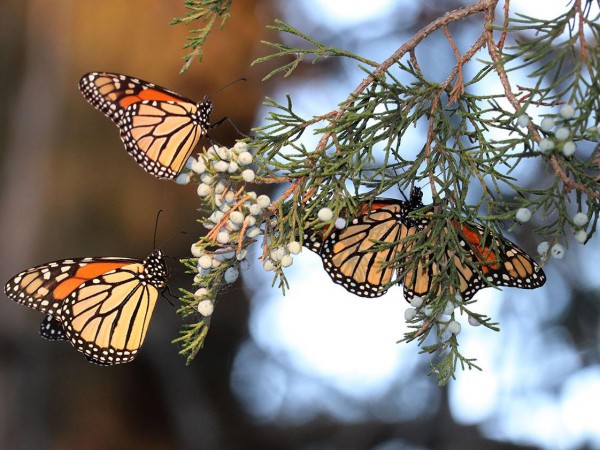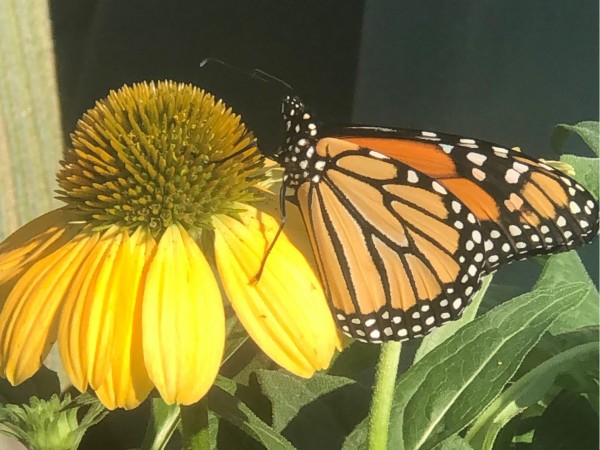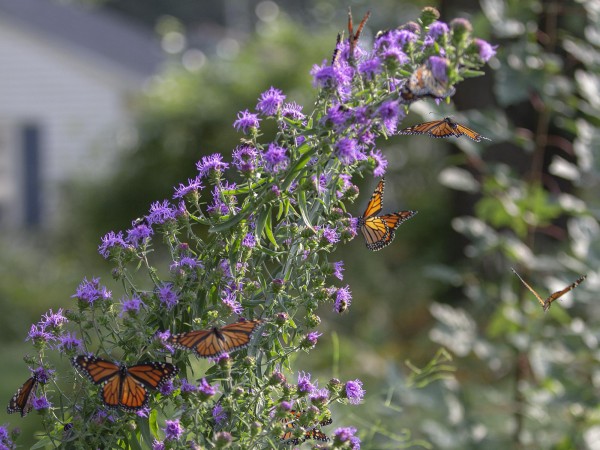Eastern Monarch Fall 2021 Report #3
Published: 09/22/2021
Note: Observations highlighted in this report are from September 10–16. To explore more recent observations, check out "The Leading Edge" section of the news update and explore our maps.
Breeding, Eggs and Larvae
In the northern U.S., Journey North citizen scientists noted late-season breeding and monarch eggs and larvae.
Susan in Litchfield, OH: "Monarch pair mating." (09/15/2021)
Friends of Watsessing Park in Bloomfield, NJ: "Although it is a bit late in the season, two fifth instar caterpillars spotted." (09/15/2021)
Fall Roosts
The Midwest remained a hotspot for fall roosts. Roosting behavior was also observed farther south in the Great Plains as a handful of reports came from Kansas. And activity also increased along the Eastern Flyway in the Northeast.
Phyllis in Morris, IL: "Picnic area at Goose Lake Prairie . . . Most of the trees had some small roosts in them with the main concentration of roosts in some of the trees at the center of the copse . . . Most of the monarchs roosted very low in the trees and seemed to also favor low, dead branches that were devoid of leaves." (09/14/2021)
Jennifer in Northport, NY: "I noticed the Monarchs roosting in the evening…today, September 15, 2021 there are many more in around the tree and flying around the yard. There could be over 100 but I’m not sure. Seems like more than yesterday." (09/14/2021)
Pam in Claflin, KS: "Two roosts; one in shelter belt, with monarchs mostly on red cedar, some mulberry and honey locust with 70 found. From 6:30-7:30 p.m.; temp. around 84 degrees F; wind from the south at about 15 mph. Monarchs were mostly in the middle of the shelter belt where it was calm. The other roost was about 1/8th of a mile south of the first, with 24 found on the north side of the willow and cottonwood trees and some over water." (09/16/2021)
Peak Migration
Peak migration events were largely concentrated in the Midwest and Northeast. Reports also came from southern Ontario, although at a slower pace than earlier in September. Last year, the latest peak migration report from Ontario (and Canada) was October 3.
Monica in Chatham-Kent, ON: "60 monarchs counted flying south over the water of Rondeau Bay and along the beach separating the bay from Lake Erie. Counted from 12:45pm to 4pm. Winds NNE at 5 to 10 km/hr, partly Sunny." (09/15/2021)
Ellen in Bayshore, NY: "The past week has brought in hundreds of thirsty Monarchs. Still finding 'cats' on common milkweed. Nectar in bloom to date, are coneflowers, asters, tithonia, marigolds, and buddleia. Seaside Goldenrod should bloom next week. Temps 75 - 83 degrees. Good wind, still humid." (09/16/2021)
Intense Nectaring
Feeding activity was widely reported. Nectar fuels migration. It’s also critical for building fat reserves monarchs need to survive the winter months.
Jen in Portland, CT: "[Monarchs] feeding on the Liatris scariosa during the late late afternoon. It was breezy and sunny. No tags spotted." (09/15/2021)

